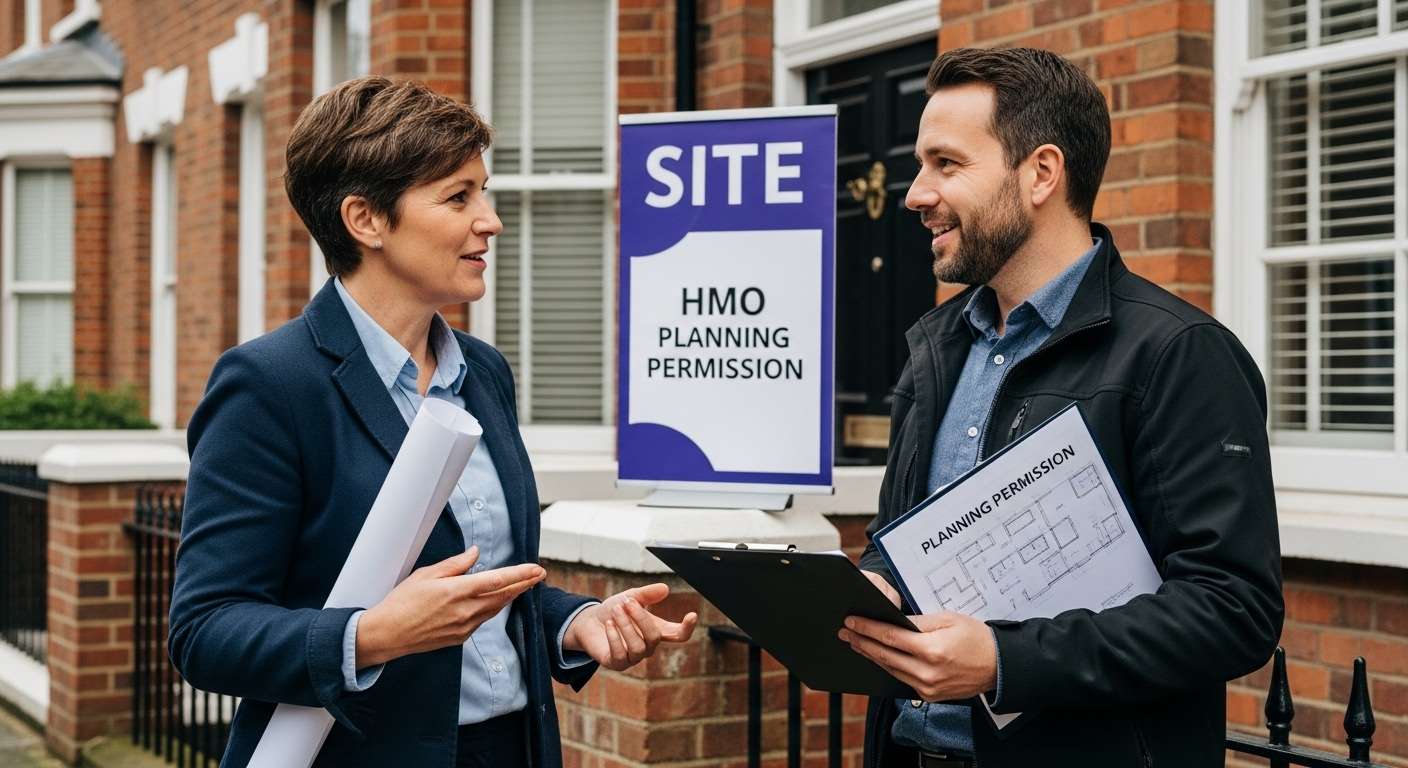An Article 4 Direction is a regulatory tool employed by local planning authorities in the UK to remove specific “permitted development rights” within designated areas.
These directions come into force on a specified date, which is crucial for understanding the legal timeline and implications for planning regulations and the change of use for small houses in multiple occupations (HMOs).
What is an Article 4 Direction with respect to HMOs.
Under normal circumstances, certain property changes, such as converting a single-family dwelling (Use Class C3) into a small House in Multiple Occupation (HMO) (Use Class C4), can be undertaken without formal planning permission. However, when an Article 4 Direction is in place, these rights are withdrawn, necessitating a full planning application for such changes. Managing the dispersal of HMOs throughout the town is crucial to address issues like parking and community stability.
The primary objective of implementing an Article 4 Direction is to maintain balanced communities, prevent the over-concentration of HMOs, and preserve the character and amenity of residential neighborhoods. This measure is particularly prevalent in areas experiencing high demand for shared housing, such as university towns and urban centers.
Additionally, landlords must acquire a mandatory HMO licence if their property has five or more occupants from two or more households. Robust evidence is essential to support the implementation of Article 4 Directions, ensuring that claims related to local amenities and the justification for restricting certain permitted development rights are well-founded.
Impact on Planning Permission
In areas where an Article 4 Direction is enforced, property owners must obtain planning permission to convert a dwelling house into a small HMO accommodating 3 to 6 unrelated individuals. Important documents related to HMO licensing and definitions under the Housing Act 2004 are available for download. This requirement applies even though such conversions would typically fall under permitted development rights elsewhere.
It’s crucial to note that Article 4 Directions are not applied retrospectively. Therefore, any HMO conversions completed before the Direction’s effective date are not affected. However, any new conversions post-implementation require planning permission and must comply with the new planning requirements.
Key Considerations for HMOs
Definition and Classification
A House in Multiple Occupation (HMO) is a property rented out by at least three people who are not from one household but share facilities like the bathroom and kitchen. The number of occupants needing a mandatory HMO licence is contingent upon whether those occupants form two or more households. HMOs are categorized based on the number of occupants:
Small HMO (Use Class C4): Accommodates 3 to 6 unrelated individuals. Small houses in multiple occupation can operate without requiring planning permission under certain conditions, depending on local planning regulations and Article 4 directions.
Large HMO (Sui Generis): Houses more than 6 unrelated individuals and always requires planning permission, regardless of Article 4 status.
Licensing Requirements
In addition to planning permission, landlords must obtain an HMO licence from the local council if the property:
Is rented to 5 or more people forming more than one household.
Tenants share toilet, bathroom, or kitchen facilities.
Licensing ensures that HMOs meet specific safety and management standards, including fire safety measures, adequate room sizes, and proper waste disposal facilities.
Lawful Development Certificate
Property owners can apply for a Lawful Development Certificate (LDC) to confirm whether their property’s current or proposed use is lawful under planning legislation. This certificate can provide peace of mind and legal clarity, especially in areas with Article 4 Directions.
Existing HMOs and Landlord Licensing
Properties already operating as HMOs before the introduction of an Article 4 Direction are typically not affected, provided they were lawful at the time. Existing small HMOs are not impacted by the Article 4 Direction if they were in existence before April 1, 2012. However, landlords should ensure they have the necessary HMO license and that the property complies with current safety and management standards.
It’s important to distinguish between planning permission and HMO licensing:
Planning Permission: Relates to the use of the property and is governed by planning laws. The areas covered by the Article 4 Direction are defined by the local authority, specifying both fully and partially covered boroughs.
HMO Licensing: Concerns the management and safety standards of the property and is regulated under housing laws.
Multiple Occupation and Community Impact
The proliferation of HMOs in certain areas can lead to various community concerns, including:
Parking Pressures: Increased number of vehicles associated with multiple tenants.
Noise and Anti-Social Behavior: Higher turnover of residents can lead to disturbances.
Waste Management Issues: More occupants can result in increased waste, straining local services.
Impact on Community Cohesion: High concentrations of HMOs may alter the character of neighborhoods, affecting long-term residents.
HMOs play a crucial role in providing low-cost housing options for young people, making them an important aspect of housing policy.
By implementing Article 4 Directions, councils aim to manage these impacts, ensuring that HMOs are distributed more evenly and that community balance is maintained.
HMOs typically accommodate unrelated people sharing common facilities such as kitchens or bathrooms, which triggers specific planning regulations and requirements.
Navigating Article 4 Directions: Tips for Landlords and Investors
1. Research Local Policies
Before investing in a property intended for HMO conversion, investigate whether an Article 4 Direction is in place in the area. Local council websites often provide maps and documentation outlining affected zones.
2. Seek Professional Advice
Consult with planning consultants or solicitors experienced in HMO regulations. They can provide guidance on the likelihood of obtaining planning permission and advise on compliance with local policies.
3. Consider Existing HMOs
Purchasing a property already operating as a licensed HMO can be a strategic move, as it may not require new planning permission. However, due diligence is essential to ensure all licenses and permissions are in place.
4. Prepare a Robust Planning Application
If applying for planning permission in an Article 4 area, a comprehensive application demonstrating how the proposed HMO will meet local standards and not negatively impact the community can improve approval chances.
It is essential to provide robust evidence to justify the implementation of Article 4 Directions, ensuring that claims related to local amenities and the restriction of certain permitted development rights are well-supported.
5. Monitor Policy Changes
Stay informed about changes in local and national policies regarding HMOs and Article 4 Directions, as these can affect future investments and property management strategies.
Summary
Understanding the implications of Article 4 Directions is crucial for anyone involved in the HMO market. These regulations play a significant role in shaping the landscape of shared housing in the UK, balancing the needs of tenants, landlords, and communities. By staying informed and proactive, landlords and investors can navigate these complexities effectively, ensuring compliance and sustainable
Further Information and Resources
Further guidance on the Article 4 direction and its impact on HMOs can be found on the city council’s website. Important documents related to HMO licensing and definitions under the Housing Act 2004 are available for download.
A consultation period was held to gather feedback on the proposed direction. For detailed guidance on regulations and requirements, visit the relevant page on the city council’s website.
Areas affected by the direction can be found on the city council’s interactive map.
Landlords and investors can seek advice from architects and planning experts to navigate the complexities of the Article 4 direction.



